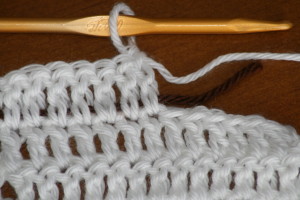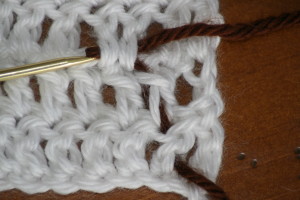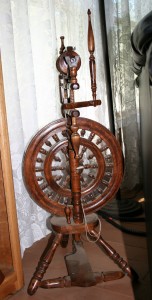Intermeshing crochet is essentially the creating of two crochet mesh fabrics. The fabrics are woven together at the time of creation; creating new visual effects.
There are a couple of different ways to begin the fabric. Started differently the weaving of the meshes being worked the same. Weaving is created by working double crochet stitches either in front or behind the mesh square of the other fabric.
The two mesh fabrics will actually be different sizes. One mesh will have an additional one column of “open mesh” windows in comparison to the other. This is to allow for an offset to the “front/back” of these stitches. This process ensures that the double crochet stitches will be centered in the “open mesh” of the opposite fabric.
Reading the patterns are harder than the stitches
The greater challenge to this technique is actually in the pattern reading. There are currently 3 popular methods to explaining patterns in Intermeshing. One is the standard written pattern that is found in other crochet fabrics, and the other two are charts.
One chart has two graphs, one for even rows, and one for odd rows of the pattern. This type of charting allows you to visually identify what the work should look like at each step. The second chart offers a quick short hand of how many stitches are worked and of what type (either front of back).
Make Intermeshing Crochet
Start by creating a first row of open mesh fabric. An even numbered chain iis created in the main color, double crochet in the 6th chain from the hook, [ch 1, sk 1 ch, dc in the next ch] across. Remove hook from fabric and set aside.
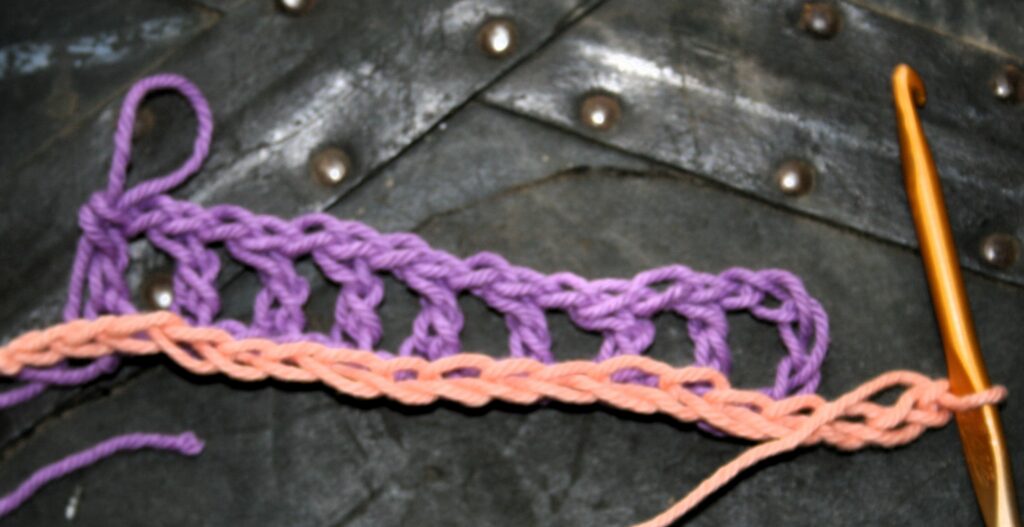
Begin the second mesh fabric one of two ways. Create a chain that is 2 chains shorter than the main color chain. At this point you have a choice to make; weave the chain through or lay it atop the open mesh of the main color mesh Row 1. Neither is right or wrong, but will give you a slightly different visual end effect of the fabric. Weaving through will give you a pattern of alternating color, while laying atop will give you a line of straight color.
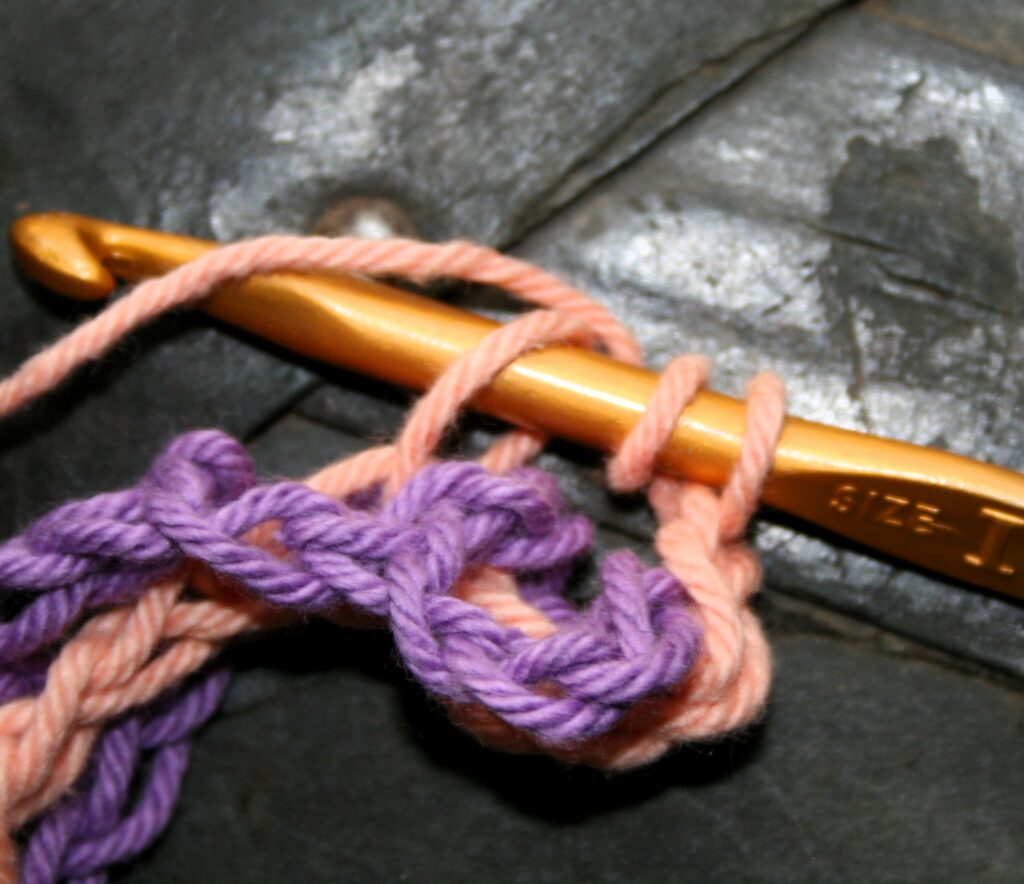
A double crochet stitch will again be worked in the 6th chain from the hook, but depending on the pattern this double crochet will either be worked in front of or behind the main color fabric and lining up with the second “open mesh” window of the piece.
Continue in pattern of either front or back across. At this point the fabric will be turned. Pay careful attention to what your pattern states here, as you are now going to remove your hook from the contrasting color yarn and work the next row of main color. The pattern will denote which side of the fabric the contrasting color fabric loop and yarn should be on (either the front of back of the fabric). This ensures that it is in the correct placement when that color row is started.
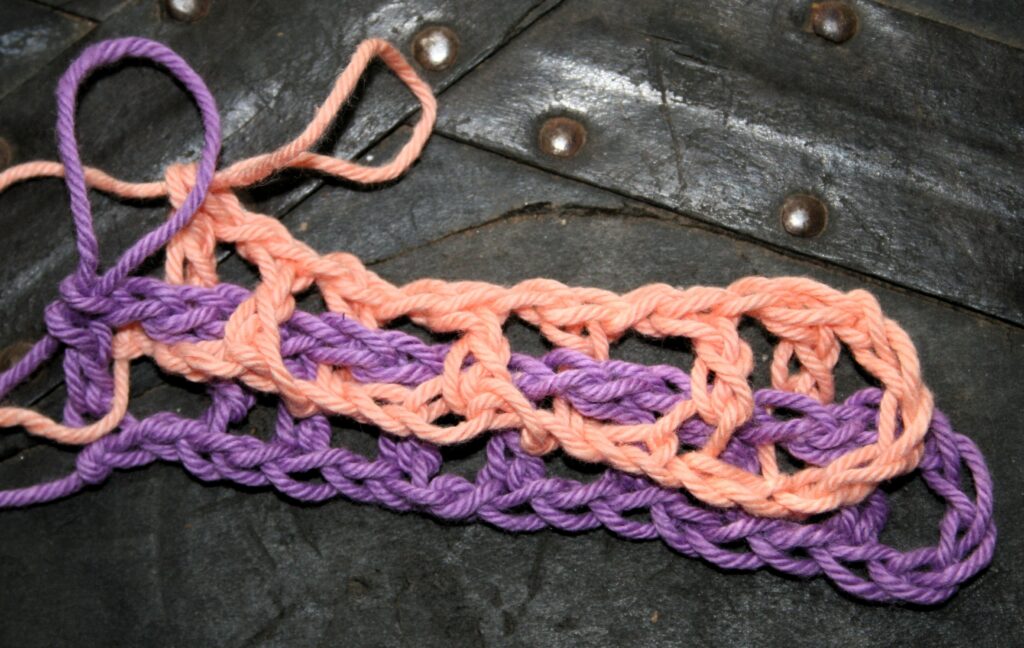
The Main color is only ever worked into the Main color, while the Contrasting color is only ever worked into the Contrasting color. Double crochet stitches will only ever be worked into double crochet stitches. Being mindful of these two truths will help you decipher where you are in the design.


